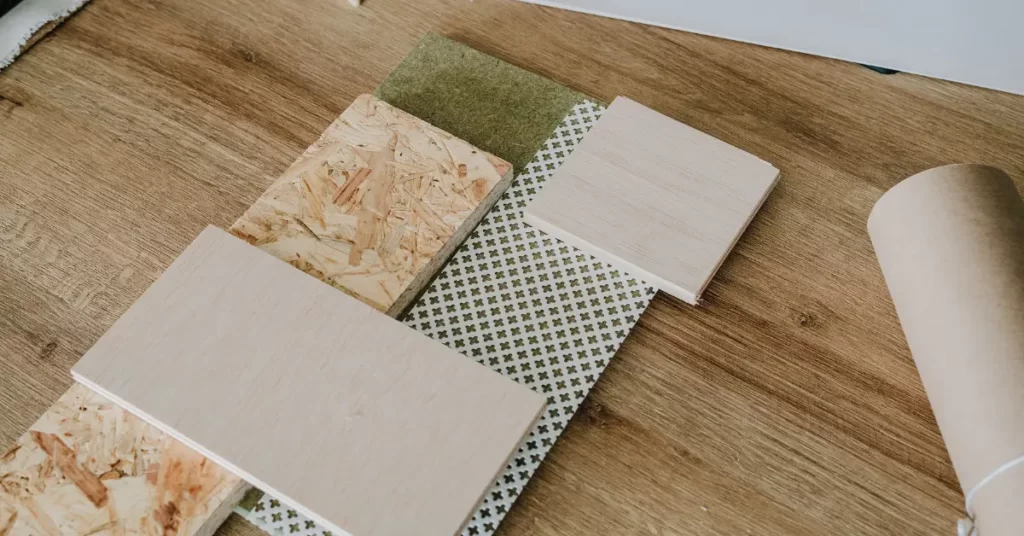Texture is a powerful tool in interior design that can add depth and visual interest to a space. It’s the element that can make a room feel cozy, warm, and inviting or cool, sleek, and modern. Texture can be applied to various elements of interior design, including walls, floors, furniture, lighting, and accessories. In this blog, we explore the different ways texture can be incorporated into your interior design and how it can transform a room.

Texture in Interior Design: Transforming Your Space with the Right Balance of Texture
1. Walls
Walls are an essential aspect of interior design that can set the tone and mood for the entire space. Adding texture to walls can create a sense of depth and interest that can make the room feel more alive. One way to add texture to walls is to use wallpaper. Wallpaper comes in a range of patterns, materials, and colors that can be used to create a unique and interesting feature wall.
Another way to add texture to walls is to use textured paint. Textured paint can be used to create a subtle or bold effect, depending on the desired look. Textured paint can be used on an entire wall or just a small area to create an accent wall.
2. Floors
Floors are another essential aspect of interior design that can be used to add texture to a space. A popular way to add texture to floors is to use rugs. Rugs come in a variety of materials and patterns that can be used to create a unique and interesting look.
Another way to add texture to floors is to use textured tiles. Textured tiles can be used to create a subtle or bold effect, depending on the desired look. They can also be used to create a feature floor in a room.
3. Furniture
Furniture is an integral part of interior design that can also be used to add texture to a space. Furniture comes in a range of materials that can be used to create a unique and interesting look. One way to add texture to furniture is to use fabric.
Fabric can be used to create a range of textures, from soft and cozy to rough and rugged. Another way to add texture to furniture is to use wood. Wood can be used to create a natural and warm feel in a space. Furniture can also be textured through its design, with intricate patterns and details that add depth and interest.
4. Lighting
Lighting is a crucial aspect of interior design that can be used to add texture to a space. Lighting can create shadows and highlights that can add depth and interest to a room. One way to add texture to lighting is to use pendant lights.
Pendant lights come in a range of materials and designs that can be used to create a unique and interesting look. Another way to add texture to lighting is to use lamps with textured shades. Textured shades can create a subtle or bold effect, depending on the desired look.
5. Accessories
Accessories are the finishing touch to any interior design project and can be used to add texture to a space. Accessories come in a range of materials and patterns that can be used to create a unique and interesting look. One way to add texture to accessories is to use cushions and throws.
Cushions and throws come in a range of materials and patterns that can be used to create a cozy and inviting look. Another way to add texture to accessories is to use decorative objects. Decorative objects, such as vases and sculptures, can add a touch of texture to a room and create visual interest. These objects come in a range of materials, from ceramic and metal to wood and glass, that can be used to add texture to a space.
The combination of different textures in a space can create a layered effect that adds depth and interest. For example, pairing a rough and textured rug with a smooth and sleek sofa can create a contrast that adds visual interest. Similarly, using a textured wallpaper on one wall and a smooth, painted finish on the other walls can create a feature wall that adds depth and texture to a room.
Conclusion
When using texture in interior design, it’s essential to consider the overall look and feel of the space. Texture can be used to create a cozy and inviting space or a sleek and modern one, depending on the desired look.
Using too much texture can make a space feel cluttered and overwhelming, while using too little can make it feel flat and lifeless. The key is to find the right balance and use texture in a way that enhances the overall look and feel of the space.
In conclusion, texture is a powerful tool in interior design that can add depth and visual interest to a space. It can be applied to various elements of interior design, including walls, floors, furniture, lighting, and accessories. When used correctly, texture can transform a room and create a unique and interesting look. By finding the right balance and using texture in a way that enhances the overall look and feel of the space, you can create a space that feels warm, inviting, and visually appealing.












